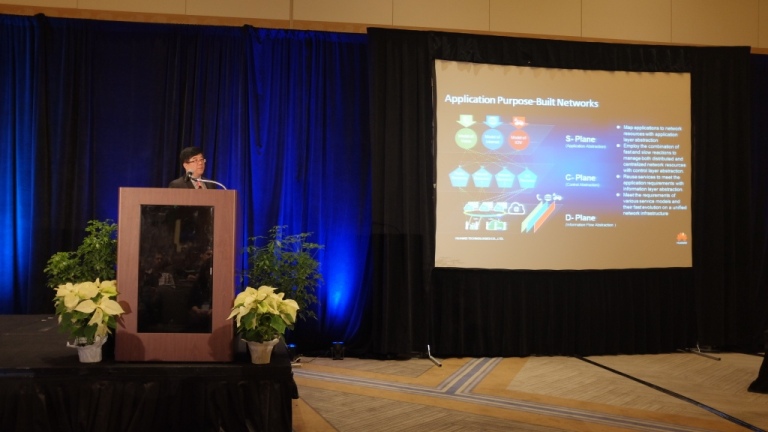
Huawei Fellow Wen Tong today announced the telecom network vendor’s AND (Application-driven Network) innovations at Globecom 2015 held in San Diego.
The AND, developed in the Future Network Theory Lab of Huawei’s 2012 Laboratories, will prioritize network applications and service demands in network design and evolution. The Chinese technology company says traditional approaches focus on network resource utilization and optimizing network operations.
Huawei claims that it is the first to propose that networks should put applications first, and believes this concept will radically change how networks, both fixed and wireless, will be designed and constructed in the future.
“Our ADN architecture vision puts applications at the network’s core to deliver application-efficiency gains for networks. ADNs will support application abstraction, network re-programmability, global and local coordination of network resources, and application decoupling by service layering. With these advantages, ADN is poised to meet a variety of future application demands, for example, in 5G networks,” said Wen Tong.
The company said ADN does not simply map several applications to a physical network, which serves as a pipe with limited functionality. ADNs will enable networks that are customizable from end-to-end depending on application demands to deliver a superior user experience. Huawei said ADNs will dynamically adapt to network changes that follow the power law effect.
Huawei has conducted theoretically study that an ADN architecture can create more stable networks, accommodate future application-led change demands, and cope better with the impact of other uncertainties in terms of services.
In addition, ADN will transform network operation models, enabling a fundamental shift in focus from network-led KPIs to service experience-led KPIs, allowing carriers to improve and create new network revenue streams.
ADN will support 5G network slicing and will bolster both near and long-term network evolution. ADNs will differ from existing NFV and SDN concepts, but will integrate NFV and SDN technologies that yet to deliver economic benefits into a comprehensive network architecture that focuses on user experience.





